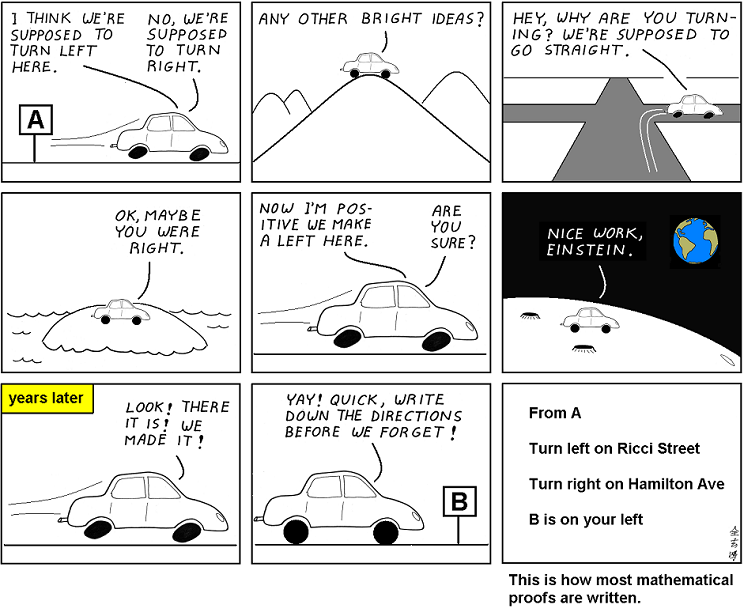Niels Abel once said(1) of Gauss, "He is like the fox, who effaces his tracks in the sand with his tail." to which Gauss replied, "No self-respecting architect leaves the scaffolding in place after completing his building."
This is also illustrated by this Abstruse Goose comic (originally licensed CC BY-NC 3.0 US DEED):
Of course, and with all due respect to Gauss, I've encountered situations where I wished I knew just how an author reached an argument, much more than I was interested in the eventual result. While it's always pleasant to marvel at the elegance of a proof, it's often the case that I want to reach a slightly different result for which the original proof breaks down. In these situations, I always wonder whether the author's original insight, which may be hidden by years of whittling the argument into the elegant proof I'm reading, would help.
What are some historically important examples where seeing the scaffolding around the completed building proved much more important than seeing the building itself?
Update: Based on the comments, let me be more precise on what I'm looking for. This would include examples where someone proved some (important?) theorem, then (much?) later, someone else rediscovered the insights that led to the proof and built a new theory that eclipsed the original theorem. Or situations that are similar, even if they do not fit exactly this description.
(1) Simmons, George Finlay (1992). Calculus Gems. New York: McGraw Hill. p. 177. ISBN 0-88385-561-5. I originally read this on Wikipedia: https://en.wikipedia.org/wiki/Niels_Henrik_Abel#Contributions_to_mathematics

